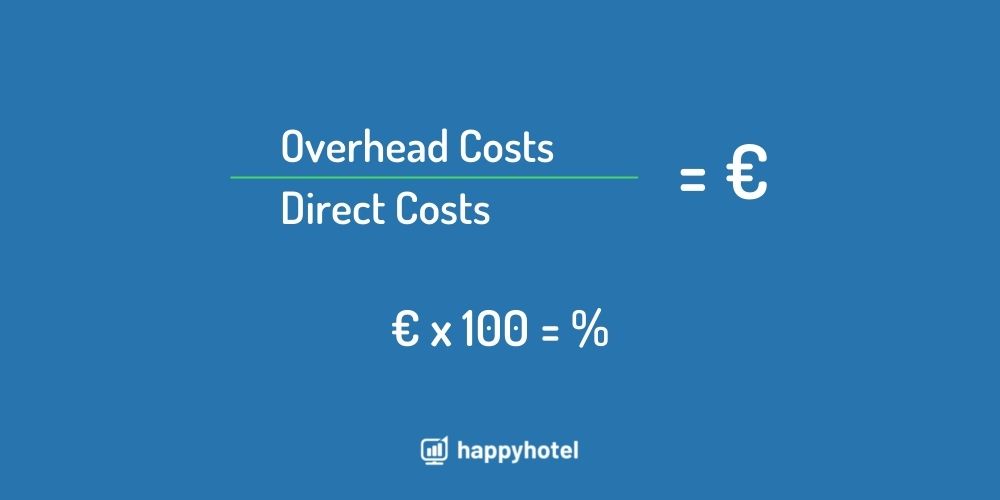Surcharge calculation is the essential and fundamental calculation method of full cost accounting and is based on the division of costs into direct and overhead costs. It is an important key figure when planning prices in hotels, such as for food in restaurants.
Surcharge Calculation is usually found in make-to-order and series production. But it also makes sense in commercial and service operations, without the help of a controller. The total costs are divided into direct and overhead costs.
Surcharge calculation will determine bid prices and their planning in a good way. They correspond therefore to cost accounting.
One can add percentage surcharges to the cost incurred to determine a fair market price for the hotel industry.
The basic principle is: overhead rate = overhead / direct costs.
This means that

What are direct costs?
In contrast to other methods, Surcharge Calculation separates direct costs from overhead costs. The classification of direct costs is based on the causation principle of the respective cost unit.
What are overhead costs?
Since overhead costs are costs that cannot be directly allocated to a cost unit (=product), the Surcharge Calculation allocates these costs indirectly according to the principle of averages.
There are two types of overhead: Single-level / Summarised and Multi-level / Differentiated Surcharge calculation.
Single-level / Summary Surcharge Calculation
In single-level or summary overhead costing, a single overhead rate defines the overhead costs. Overhead consist of four groups: Material Overhead, Manufacturing Overhead, Administrative Overhead, Sales Overhead.
The basis for the summary overhead rates are, for example, manufacturing costs in production or material costs.
Multi-level / differentiated surcharge calculation
In addition to single-level calculation, there is also multi-level calculation. It subdivides the overhead costs and several partial contributions and thus considers them in a differentiated manner. The advantage of multi-level costing is that one can divide the the costs according to their cause. Different overhead bases appear and they facilitate a better allocation of costs.
Calculation of the overhead rate
You should calculate the overhead base separately, for example for storage, kitchen and administration. Divide the overhead costs by direct costs: you get the overhead base.

Surcharge Calculation in the hotel and catering industry
Here we have some examples of surcharge calculation in the hotel and catering industry. An overhead surcharge is added to the direct costs. This results in the cost price in the hotel.
The cost of goods sold calculation forms the basis for further operational costing.
Cost of goods sold for food:
The cost of goods includes, for example, the cost of food and the care of the goods. This covers receipt of goods, quality control, shelf life, storage and cold chains. Strictly speaking, you have to take into account that you cannot use 100% of the product for food production. Usually, one shouldn’t take leftovers and waste into the total.
Overheads in catering can include rent, electricity, telephone and internet costs, gas, water, kitchen equipment, waste disposal and maintenance.

Advantages and disadvantages of Surcharge Calculation as a key figure
Many key figures and their calculations give the hotelier a great overview and help in budgeting his prices.
However, the disadvantage of this method is that the scheme is based on the cost of goods. In most gastronomic businesses, however, personnel costs are higher than the cost of goods. Therefore, take into account also the time required for the preparation and cooking of food and beverages, the service costs and the cost of goods. These form the basis of the calculation.
However, the strengths of the Surcharge calculation are certainly the simple procedure and the long-term cost control. It is also possible to compare the cost of goods and overheads.